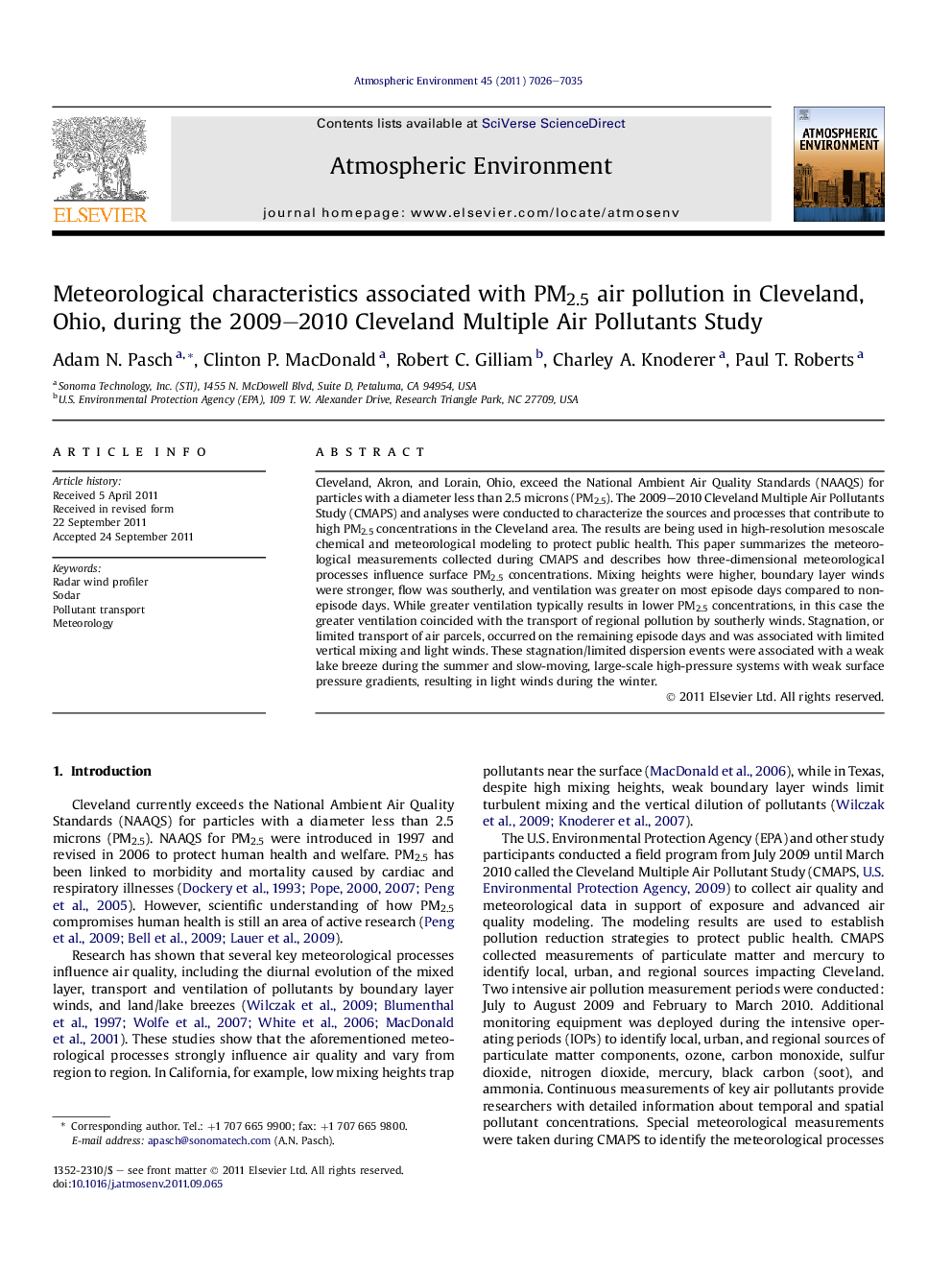| Article ID | Journal | Published Year | Pages | File Type |
|---|---|---|---|---|
| 4439139 | Atmospheric Environment | 2011 | 10 Pages |
Cleveland, Akron, and Lorain, Ohio, exceed the National Ambient Air Quality Standards (NAAQS) for particles with a diameter less than 2.5 microns (PM2.5). The 2009–2010 Cleveland Multiple Air Pollutants Study (CMAPS) and analyses were conducted to characterize the sources and processes that contribute to high PM2.5 concentrations in the Cleveland area. The results are being used in high-resolution mesoscale chemical and meteorological modeling to protect public health. This paper summarizes the meteorological measurements collected during CMAPS and describes how three-dimensional meteorological processes influence surface PM2.5 concentrations. Mixing heights were higher, boundary layer winds were stronger, flow was southerly, and ventilation was greater on most episode days compared to non-episode days. While greater ventilation typically results in lower PM2.5 concentrations, in this case the greater ventilation coincided with the transport of regional pollution by southerly winds. Stagnation, or limited transport of air parcels, occurred on the remaining episode days and was associated with limited vertical mixing and light winds. These stagnation/limited dispersion events were associated with a weak lake breeze during the summer and slow-moving, large-scale high-pressure systems with weak surface pressure gradients, resulting in light winds during the winter.
► Analyzed boundary-layer meteorology and air quality in Cleveland. ► Focused on data collected by a radar wind profiler and sodar. ► Determined that high PM2.5 conc. often occurred with high mixing heights and southerly transport. ► Determined processes important for modeling, used to design emissions control strategies.
